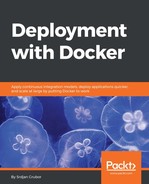With every system that depends on a large number of similarly configured machines (regardless of whether they are physical or virtual ones), there always arises a need for simple and easy rebuild tooling to help automate the majority of the tasks that have in the past been done by hand. In the case of PaaS clusters, ideally, all pieces of the infrastructure are capable of being rebuilt with minimal user intervention into the exact state that is wanted. In the case of bare-metal PaaS server nodes, this is critically important as any operation that you have to do manually gets multiplied by the number of nodes you have, so streamlining this process should be of utmost importance for any kind of production-ready clustering infrastructure.
Now you may ask yourself, "Why do we care about covering CM tooling?" and the truth of the matter is that if you do not have proper CM around your container infrastructure, you are guaranteeing yourself after-hour emergency calls due to various issues such as: the nodes never joining the cluster, mismatched configurations, unapplied changes, version incompatibilities, and many other problems that will make you pull your hair out. So to prevent this set of situations from happening to you, we will really dive deep into this ecosystem of supporting software.
With that explained and out of the way, we can see some of the options we have available to choose from for the CM tooling:
- Ansible (https://www.ansible.com)
- Puppet (https://puppet.com)
- Chef (https://www.chef.io/chef/)
- SaltStack (https://saltstack.com)
- A few others that are mostly far weaker in terms of functionality and stability.
Due to the fact that both Puppet and Chef require an agent-based deployment and SaltStack is trailing in Ansible popularity by a huge margin, for our work here, we will cover Ansible as the CM tooling of choice but as your needs will probably vary. Use your own requirements to select the most appropriate tool for the job.
